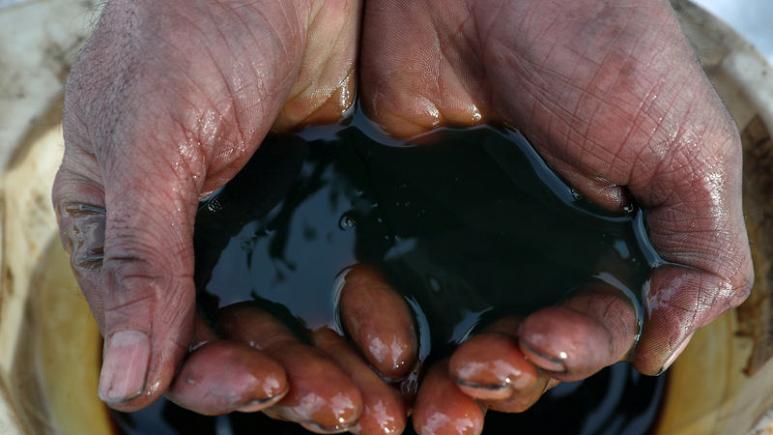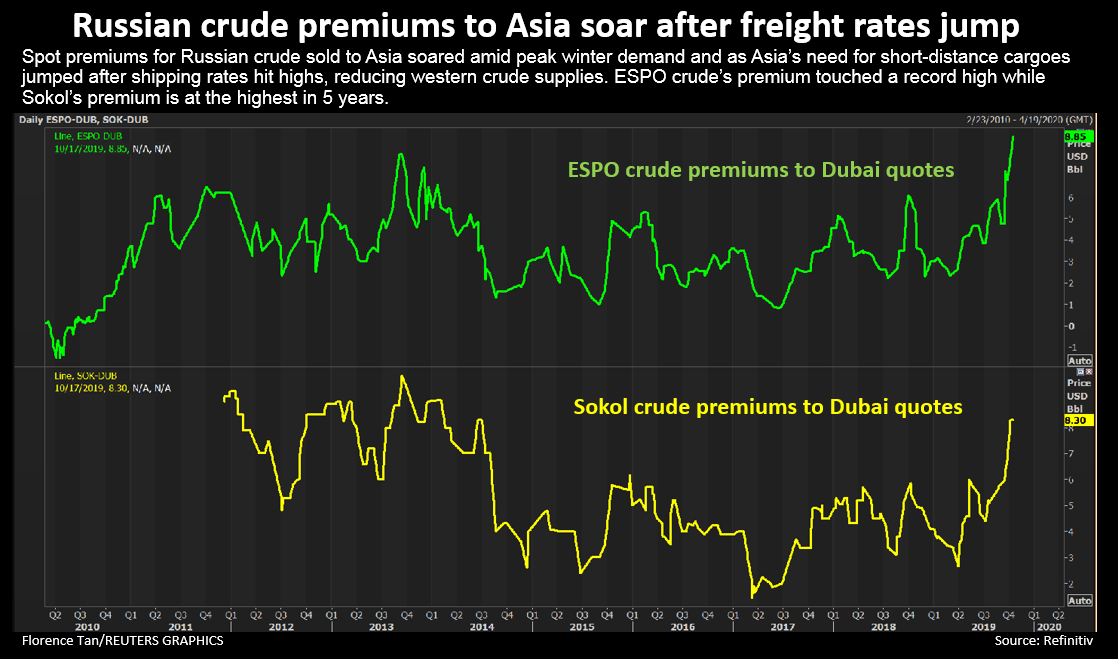Source: Reuters
Russia, the world’s No. 2 oil producer, has become an unintended beneficiary of U.S. sanctions after an embargo on Chinese ships drove up tanker freight rates, spurring record premiums for Russian crude that takes just days to arrive in North Asia.

FILE PHOTO: An employee holds a sample of crude oil at the Yarakta oilfield, owned by Irkutsk Oil Co, in the Irkutsk region, Russia on March 11, 2019. REUTERS/Vasily Fedosenko/File Photo
Demand for key Russian oil grades sold in Asia has been strong in the past month after an attack on key oil processing facilities in Saudi Arabia drove up prices for spot crude while Asian refiners are processing more low-sulphur grades to meet shippers’ demand for cleaner fuels from 2020.
However, soaring freight rates in the past two weeks prompted Asian buyers to bid up for cargoes that ship over shorter distances such as oil from Russia.
These factors pushed spot premiums for ESPO Blend crude, loading from Russia’s Pacific port of Kozmino, to hit an all-time high of nearly $9 a barrel to Dubai quotes in a Surgutneftegaz [SNGS.MM] spot tender for two cargoes loading in early December.
The spot premium for Russian Sokol crude also jumped to a five-year-high of around $8.30 a barrel to Dubai quotes as ONGC Videsh [ONVI.NS] sold a cargo at that level to a Japanese refiner earlier this month, traders said.
Freight rates soared to new highs over the past couple of weeks after nearly 300 oil tankers, or 3% of the global fleet, were placed off limits as companies fear violating U.S. sanctions against Iran and Venezuela.
“Russia’s Urals (crude) has been doing fine this year mostly thanks to sanctions against Iran and Venezuela and now ESPO has clearly benefited. U.S. sanctions really do Russian oil grades good,” a Western trader said.
Although spot premiums for crude have risen across the board, Russian crude grades are being favoured by Asian buyers “mainly due to freight”, said a Chinese trader.
“Short-haul cargoes will be attractive,” he added.
It takes four days to ship a cargo of ESPO crude from Russian’s Kozmino port to China’s Shandong port and three days to Japan’s Chiba port, according to data on Refinitiv Eikon.

The Russian cargoes are expected to head to Japan where refiners will ramp up output during fourth quarter to meet peak winter demand, traders said.
They added that uncertainty over Saudi light crude supplies after the attack is also supporting light crude prices.
Oil production at the world’s top exporter has rebounded back to 11.3 million bpd and was on track to reach 12 million bpd by the end of November, but some traders said it could take longer to repair the crude oil processing plants.
“Although the overall output is back it does not mean the supply of Arab Light and Arab Extra Light is back to normal,” said an Asian refinery source.
“Some smaller refineries need to buy spot cargoes in advance to hedge the risks.”

